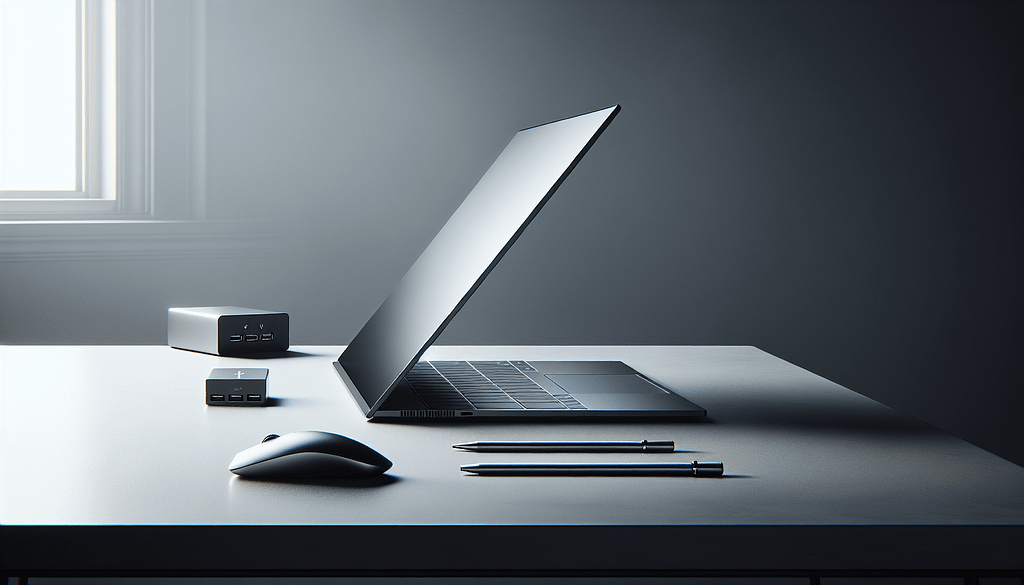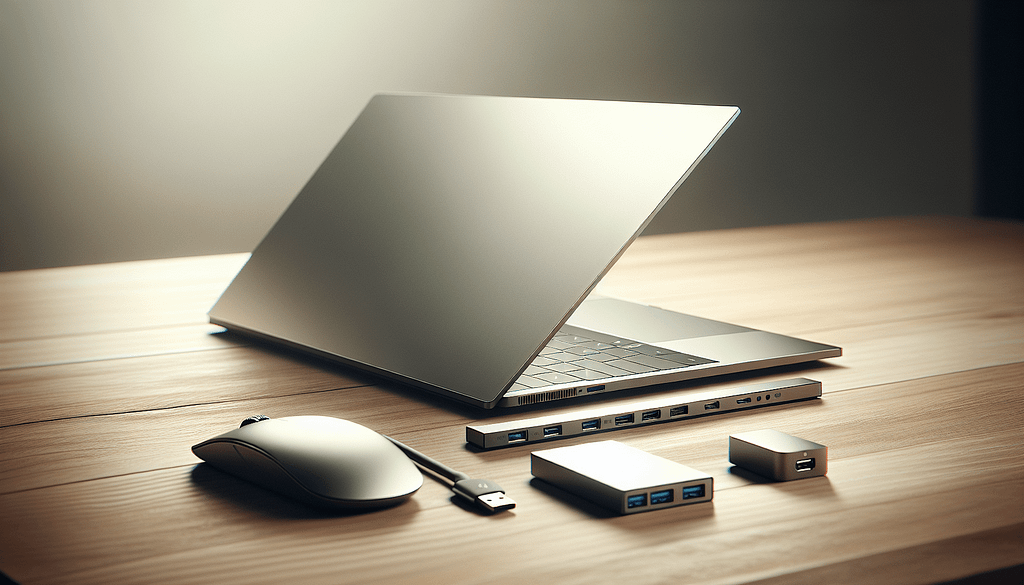Why Does My MacBook Air Not Have A USB Port?
Wondering why your MacBook Air lacks a USB port? Discover Apple’s design choices, the switch to USB-C, and how to adapt to this modern connectivity conundrum!
Why Does My MacBook Air Not Have A USB Port?
Ah, the MacBook Air — that sleek, lightweight marvel of modern technology. You’ve probably marveled at its elegance and thinness, but then, like a sudden gust of wind on a sunny day, you experience a twinge of confusion: “Why doesn’t my MacBook Air have a USB port?” It’s a question many have pondered while clutching their beloved flash drives, desperately wondering how they’re supposed to connect their tech without a traditional USB port. Fret not, dear reader, for this article will guide you through the nuances of Apple’s design choices and the evolution of connections on your favorite gadget.
The Transition to USB-C
Embracing Change
Let’s face it: the world of technology is a whirlwind of constant evolution and change. What was once a lavish feature quickly becomes passé, much like bell-bottom jeans or VHS tapes. Apple has embraced this shift wholeheartedly, opting for the USB-C standard in their devices, including the MacBook Air. But why, you ask? USB-C is not just the new kid on the block; it’s a versatile connector that can handle data transfer, power delivery, and even video output all in one sleek port.
Imagine having a single cable that can charge your device, transfer files at lightning speed, and connect to multiple external displays. It’s like a multitasking superhero — a true jack-of-all-trades. While this switch makes things lighter and more efficient, it can feel bewildering if you’re used to the many ports of yore.
USB-C vs. Traditional USB Ports
Now, you might be thinking, “I’ve used USB ports for years; they’re reliable, right?” And you’re absolutely correct! Standard USB ports have served us well over the years, allowing easy connections with a plethora of gadgets and peripherals. However, as technology advanced, the need for something multifaceted gave rise to USB-C. Let’s explore a few reasons why this is a good move, even if it feels a bit inconvenient at first.
- Reversible design: Gone are the days of fumbling to insert your USB cable. USB-C connectors are reversible, meaning you can plug them in without worrying about the orientation.
- Faster data transfer: If you’ve ever faced the agonizing wait of transferring files using older USB standards, you’ll appreciate the speed of USB-C. It can handle data transfer rates of up to 40 Gbps!
- Universal compatibility: As more and more devices around us begin to adopt USB-C, you’ll find it easier to connect various gadgets without carrying a bag full of different cables.
Understanding Apple’s Design Philosophy
Prioritizing Thinness
Apple has long been celebrated (and criticized) for its commitment to design. The MacBook Air exemplifies this philosophy. By prioritizing a slim profile, Apple has been able to remove bulky components, including the USB-A ports you might be accustomed to. This design decision often leads to mixed feelings. Many love the sleek appearance of an ultra-thin device, while others feel a pang of nostalgia for the good old days of multiple ports.
Simplifying the User Experience
You might argue, “But I just want a straightforward connection!” Well, Apple believes that by reducing the number of ports, they can simplify the user experience. By consolidating functionalities into a single port design, they encourage users to move towards a more streamlined method of connecting devices. This minimalist approach is not just about aesthetics; it’s about creating a cohesive ecosystem that encourages you to explore new ways of connecting and powering your devices.

Adapting to a Wireless World
Bluetooth and Wi-Fi Advantages
As technology evolves, so does our reliance on wireless connections. Bluetooth and Wi-Fi are no longer considered novel; they’re standard. With the rise of cloud storage and wireless peripherals, many users are discovering that they can achieve what they need without traditional USB connections. Think about it: how often have you successfully printed from your MacBook Air to a Wi-Fi-connected printer? Or streamed music from your laptop to a Bluetooth speaker?
Embracing the Future
While it may feel uncomfortable at first to let go of USB ports, embracing these wireless technologies brings with it a world of possibilities. This shift in focus allows you to leverage the vast potential of cloud storage, seamless backups, and easy device management — from wherever you are, without the limitations of physical connections. Sure, there may be a slight learning curve at first, but once you adjust, you might find that this new rhythm of wireless connectivity feels liberating.
USB-C Accessories: What You Need to Know
Explaining the Adapter Need
Alright, we get it! You’re probably mumbling something along the lines of, “But what about my flash drive? How am I supposed to connect it now?” This is the moment when USB-C adapters enter the scene. Don’t worry; you’re not alone in this conundrum! Adapters can indeed alleviate some of the anxiety associated with your new MacBook Air’s lack of traditional USB ports.
- USB-C to USB-A adapters: These handy gadgets let you plug your old USB devices into your shiny new MacBook. They’re typically affordable and incredibly convenient. You can carry one in your bag and pull it out like a trusty sidekick whenever you need access to your files.
- USB-C hubs: If you’re feeling like a tech wizard, consider investing in a USB-C hub. These nifty devices can expand your single USB-C port into multiple ports, including HDMI, USB-A, and SD card slots. Suddenly, your MacBook Air becomes a hub of productivity, and you’ll feel like you’ve unlocked a new level in your tech game.
Finding Quality Adapters
Now that you know what types of adapters are available, it’s crucial to choose wisely. Not all adapters are created equal! Look for robust designs, support for fast data transfer, and good customer reviews. Remember: your time is precious, and you shouldn’t waste it on flimsy products that aren’t up to par.

Troubleshooting Connectivity Issues
Connection Challenges
Have you ever plugged in a device, and it simply doesn’t connect? It’s incredibly frustrating, isn’t it? As you now embrace this new world of connectivity, you may occasionally face some hiccups. But don’t lose hope — there are ways to troubleshoot common issues!
- Ensure compatibility: First and foremost, make sure your device is compatible with USB-C. This might sound obvious, but technology can be quirky, and sometimes, even the most reliable brands drop the ball.
- Check for driver updates: If all else fails, it might be time to check for updates. Keeping your macOS and any relevant drivers up to date can prevent connection issues and enhance performance.
Resetting SMC and PRAM/NVRAM
Sometimes, your MacBook may need a little extra love. If you’re encountering persistent problems, consider resetting the System Management Controller (SMC) and the PRAM/NVRAM. These resets can resolve many odd issues, including USB connectivity. Just remember to back up important data before going all in, as you never know when the technology gods might smite you with a rogue glitch.
Alternatives to USB Devices
Exploring Cloud Storage Options
As mentioned earlier, there’s a whole world of wire-free connectivity to explore! Instead of relying on USB drives, why not consider cloud storage services like Google Drive, Dropbox, or iCloud? These platforms allow you to store files remotely and access them from any device with an internet connection.
Imagine being able to seamlessly share large files with friends or colleagues without the hassle of physical drives. Plus, there’s something liberating about knowing your data is secure in the cloud, not precariously balanced on your desk waiting to be lost.
Embracing Wireless Peripherals
By utilizing wireless devices, you can declutter your workspace while enjoying a more convenient experience. Wireless keyboards, mice, and headphones can seamlessly integrate with your MacBook Air, making you feel like a part of the streamlined future Apple envisions.
Frequently Asked Questions
Do I absolutely need adapters with my MacBook Air?
If you want to use traditional USB devices, then yes, investing in some adapters is a sensible move. However, for many users, embracing USB-C and wireless solutions can significantly reduce the need for physical adapters altogether.
Can I charge my MacBook Air using any USB-C cable?
Yes! One of the benefits of USB-C is that you can use various cables to charge your MacBook Air, as long as they meet the power requirements. Just be cautious with inexpensive third-party cables, as they sometimes compromise charging efficiency and speed.
Is USB-C faster than conventional USB?
Absolutely! USB-C supports higher data transfer rates compared to traditional USB types, particularly with USB 3.1 and more advanced standards. If speed is your ultimate goal, USB-C will serve you well.
What’s Next for Connectivity?
Staying Ahead of the Curve
As technology continues to evolve, so will the way we connect our devices. While Apple has made strides with USB-C, you can expect even more innovative solutions in the future. It’s worth keeping an eye on emerging technologies, like Thunderbolt 3 and beyond, which offer incredible possibilities for data transfer and device connectivity.
Developing a Trusty Tech Toolbox
In your journey to fully embrace your new MacBook Air, consider developing a trusty toolbox of accessories and adapters to accommodate your needs. This will help you become a master of your tech domain, confidently bridging the gap between old and new.
Conclusion
As you get accustomed to your MacBook Air’s lack of traditional USB ports, remember that change is not just challenging — it’s an invitation to explore new avenues of connection. USB-C does indeed require some adjustments, but with the right approach and mindset, you’ll find that moving beyond traditional ports can enhance your overall experience.
So, take a deep breath, embrace your new device, and happy connecting! If you’ve enjoyed this article and found it informative, don’t hesitate to clap for it, leave a comment, and subscribe to my Medium newsletter for updates. You’ll be the first to know when new explorations in tech land arise!
from Stories by Casenixx Phone Cases on Medium https://ift.tt/hxBqL4G
via IFTTT
Comments
Post a Comment